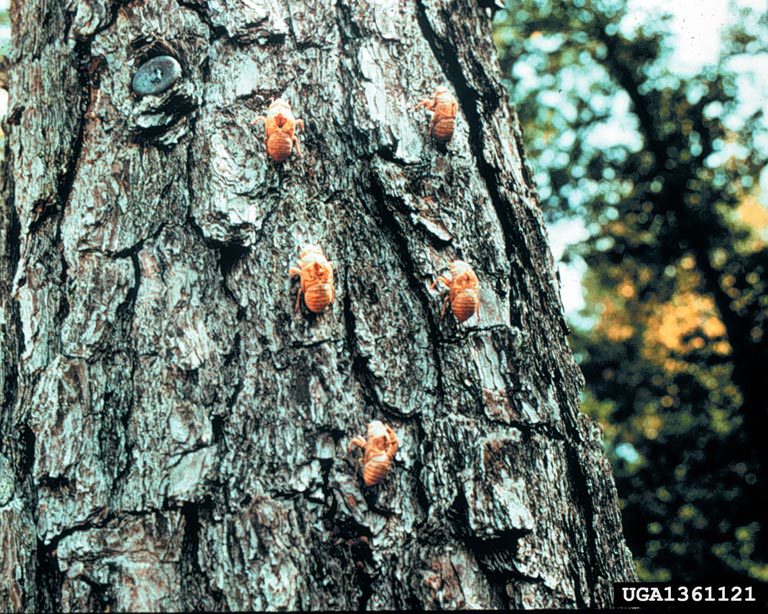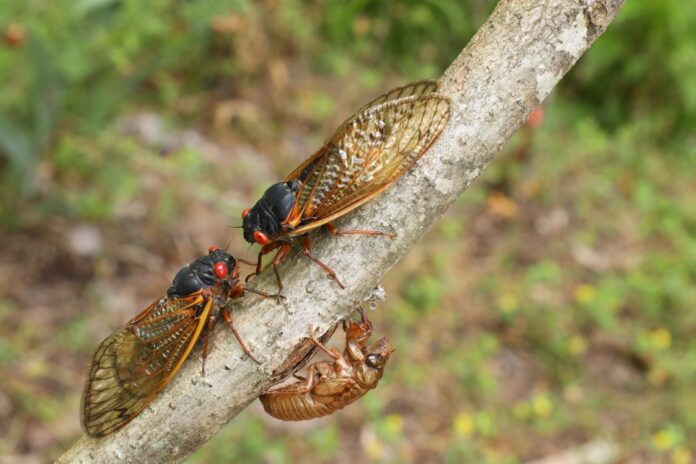AUBURN UNIVERSITY, Ala. – Generations of children living in the Southeast have long listened to the sound of a cicada’s song and collected their exoskeletons in yards and wooded areas. With the expected emergence of Broods 13 and 19, Meredith Shrader — an Alabama Cooperative Extension System entomologist — said this year is a great opportunity for parents to use the cicada to teach their children about ecosystems, life cycles and science.
“The earlier parents can introduce their children to insects and help them understand that they are not all bad, stinging creatures — the better,” Shrader said. “It is important to help them understand the importance of insects in our ecosystem.”
Get out and explore
Cicadas in Brood 13 emerge every 17 years, and Brood 19 emerges every 13 years. Shrader encourages parents to follow the emergence of these periodical cicadas in their area, using it as a tangible, life-science teaching tool. She recommends using cicadamania.com to follow trends and updates. This website includes facts, species identification, emergence tracking and the sounds made by each species.
“One of the interesting things about the broods emerging this year is that their sounds truly are different,” Shrader said. “If people listen to the sounds in their backyard and compare what they hear to the website, they will be able to identify which cicada brood is singing nearby.”
Shrader said cicadas from Broods 13 and 19 have different sounds, but they also sound different than the annual cicadas that sing each summer in Alabama.
Head to a cicada zone
Because of urbanization of former forested areas, cicada zones may be less prevalent than many years ago. However, Shrader said this learning opportunity is worth the drive to a cicada zone. She recommends looking at historical data to see where cicada hot spots may be.
“See if there is somewhere nearby that is worth driving to,” Shrader said. “The University of Connecticut has an interactive map that is following the cicada emergence and has both current and historical data.”
When is the best time to look for cicadas?

Photo credit: Terry S. Price, Georgia Forestry Commission, Bugwood.org
This year’s emergence is an important event for cicada predators. Cicadas first feed on tree roots. Then — as they emerge from the ground — moles, birds, opossums and other small creatures feed on the cicadas. Shrader said the emergence is a survival strategy for the insects. They emerge all at once, hoping that some cicadas will survive to reproduce, lay eggs and start the process again.
“Cicada emergence will happen in the dead of night, when the cicada’s major predators are not moving,” Shrader said. “This will give them time to come out of their exoskeletons and dry off. Then, they fly to the tops of the trees to warm up.”
Shrader said that cicadas must be warm to sing, so singing will likely begin around 10 a.m. the morning after emergence.
“Unfortunately, most opportunities to see cicadas will be as they are dying on the ground,” Shrader said. “Those who do not make the climb up the tree will be the ones that are most easily available for observation with families and children.”
Things to do
Shrader said there are plenty of ways to use this natural phenomenon as a teaching tool.
“It is important for children to have exposure to insects in order to teach them not to be afraid,” Shrader said. “These guys are big but they won’t hurt you, and they will be in a lot of places. Take the time to see, touch and experience what is going on around you.”
- Head to a cicada zone. Use the available tools to find cicada zones near you.
- Collect specimens. Find cicadas or exoskeletons and pin them on a foam board for observation and safekeeping.
- Make your own map. Find and identify species, collect data and create your own map of your findings.
More information
Use this year’s double-brood emergence as an opportunity to teach children about the ecosystem, all while enjoying one of nature’s most fascinating phenomena. Learn more about Alabama’s ecosystem and other insects by visiting www.aces.edu.



















